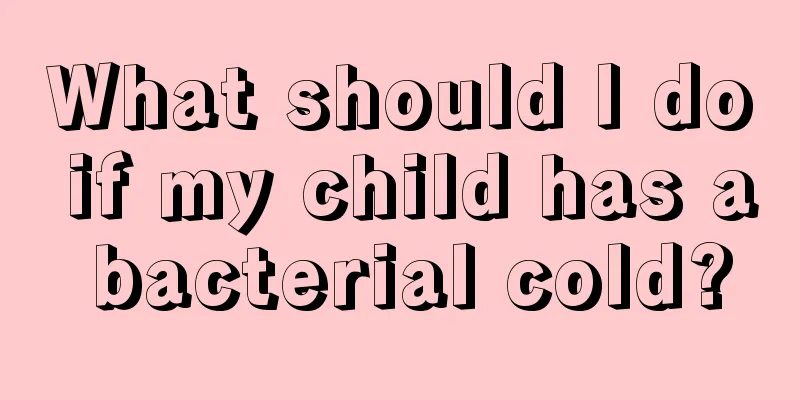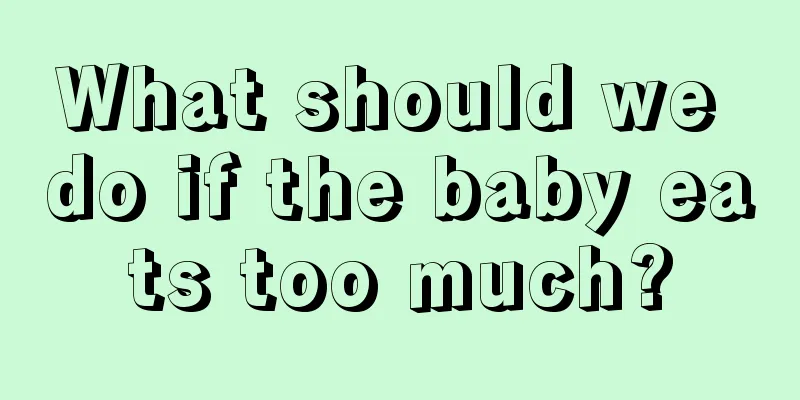Does your child have blood on his butt after defecation?

|
Generally speaking, when children have blood in their stool, it is mostly caused by anal fissures, which is a very common phenomenon. If a child has anal fissures and the parents do not discover it in time and do not handle it properly, anal fistula is very likely to occur. It is best to take the child to the hospital for examination. During the treatment, parents need to clean the child's anus, keep the area around the anus lubricated, and let the child eat more foods with higher fiber content. The causes of anal fissure in children are related to the following factors: 1. Anatomical factors The superficial part of the child's external anal sphincter forms the anococcygeal ligament behind the anus. It is hard and has poor elasticity. The pressure behind the anus is relatively high and it is easily damaged, forming anal fissures. 2. Trauma Some children suffer from constipation. Because their stools are dry and hard, they exert too much force when defecation, which can easily damage the skin of the anal canal. Repeated damage can cause deep lacerations that extend through the entire layer of skin, forming chronic infectious ulcers. Constipation causes anal fissures in 14% to 24% of cases, but constipation can also be a consequence of anal fissures due to the pain and fear of defecation in children. 3. Infection If a child suffers from some other anal canal diseases, such as anal sinusitis, the affected area will spread downward and cause subcutaneous abscesses, rupture and become chronic ulcers, which can also cause anal fissures. Anal fissure can be divided into acute and chronic types. Acute anal fissures occur over a short period of time and are red, shallow, with fresh, neat fissures and no scarring. Chronic anal fissures have a long course, recurrent attacks, a deep and irregular bottom, often with hypertrophic nipples at the upper end and sentinel piles at the lower end, generally known as the triad of anal fissures. Sentinel piles are caused by subcutaneous lymphatic congestion, similar to external hemorrhoids. During the examination, they are seen first and then the fissures, which helps with diagnosis, so they are called sentinel piles or fissure piles. In the late stage, perianal abscesses and subcutaneous anal fistulas may also occur. Parents need to find out the cause of their children's anal fissures so that they can prescribe the right medicine and find the best treatment. If a child suffers from anal fissure, there will be three typical clinical manifestations: pain, constipation, and blood in the stool. 1. Pain Anal fissures can cause periodic pain due to defecation, which is the main symptom of anal fissures. When defecating, the feces stimulate the nerve endings on the ulcer surface, and you will immediately feel a burning pain in the anus, but the pain will ease a few minutes after defecation. This period is called the pain interval. Later, due to spasm of the internal sphincter, severe pain will occur again. This period can last from half a hour to several hours. The child will be restless and find it difficult to endure until the sphincter is fatigued, the muscles relax and the pain is relieved. But the pain occurred again when I defecated again. The above is clinically called anal fissure pain cycle. The pain may also radiate to the perineum, buttocks, inner thighs or sacrum. The child may resist defecation due to the pain and may even cry constantly. 2. Constipation Children are unwilling to defecate due to anal pain, which may cause constipation over time and make the stool drier and harder. Constipation may aggravate anal fissures, forming a vicious cycle. 3. Blood in the stool When children have bowel movements, there is often a small amount of fresh blood on the surface of the stool or on the toilet paper, or drops of blood. However, major bleeding is rare. 4. Others The child's anus may experience itching and discharge, and some children with anal fissures may also have symptoms such as diarrhea. |
<<: The dangers of a child having a persistent fever of 38 degrees
>>: What to do if the child doesn't call?
Recommend
How can primary school students grow taller quickly?
Primary school students are in the stage of growi...
What is the treatment for pharyngitis in children?
Families don't want to see their children inv...
What are the symptoms of low muscle tone?
I believe many people are not very familiar with ...
What snacks should a one and a half year old baby eat?
Babies of one and a half years old can already ea...
Why does my child always cough?
Many children are very prone to diseases because ...
What should I do if my baby has inflammation and repeated fever?
If there is a baby at home, the baby's every ...
3-year-old baby has fever and convulsions
When a baby has a fever, he or she will have many...
How to treat oral herpes in children?
Oral herpes is a relatively common skin disease i...
What to do if your baby has lip ulcers
Ulcers are a common disease among many people. Th...
The child's breathing is rough
Because children have poor body resistance, they ...
Can babies with urticaria take a bath?
Bathing is an activity that everyone does. It is ...
What to do if your child has a picky eater
Children nowadays live a very happy life. They no...
How to treat baby bronchitis
Bronchitis is a respiratory disease that everyone...
What should children eat if they don't grow taller?
I believe that as a parent, you are not only worr...
How to treat constipation in children?
The causes of constipation in children include: l...









